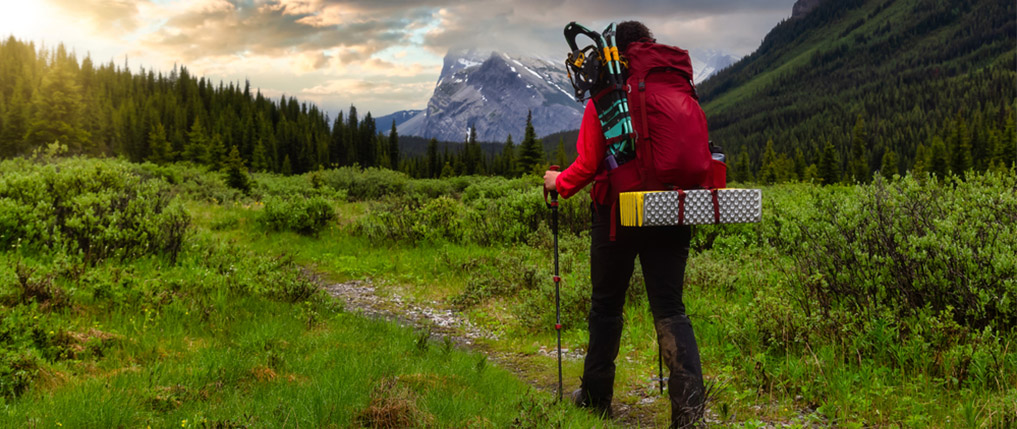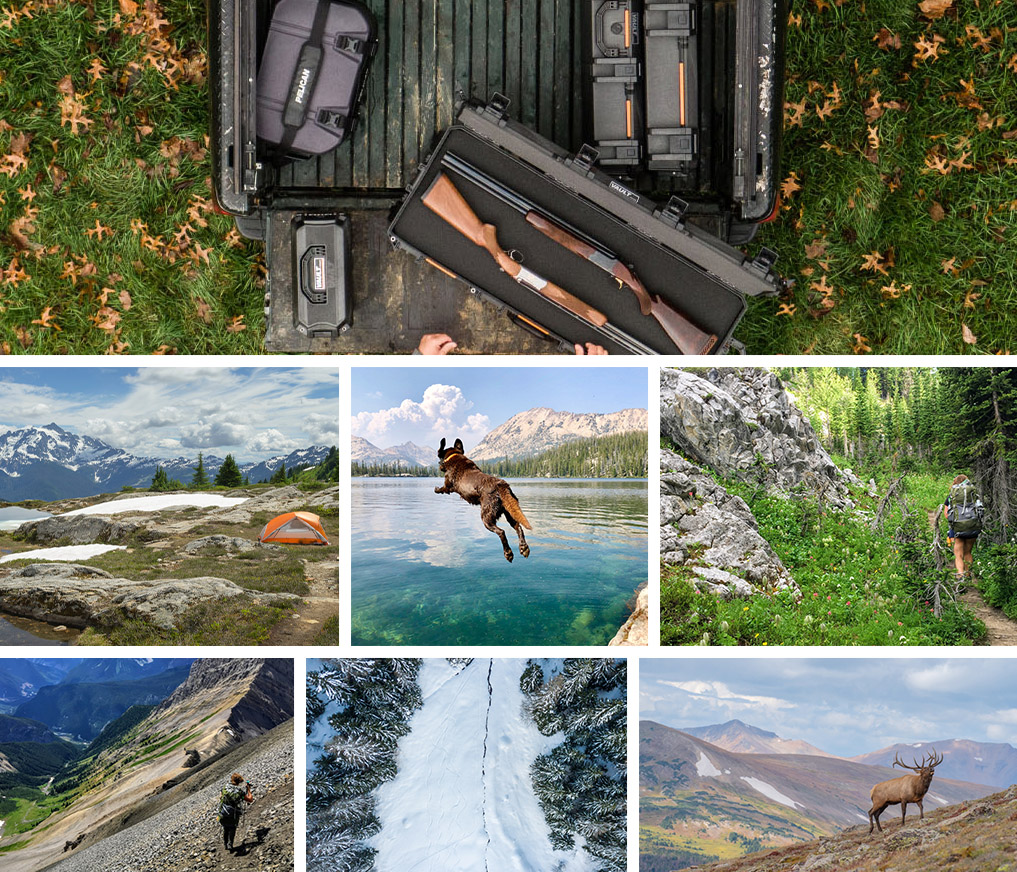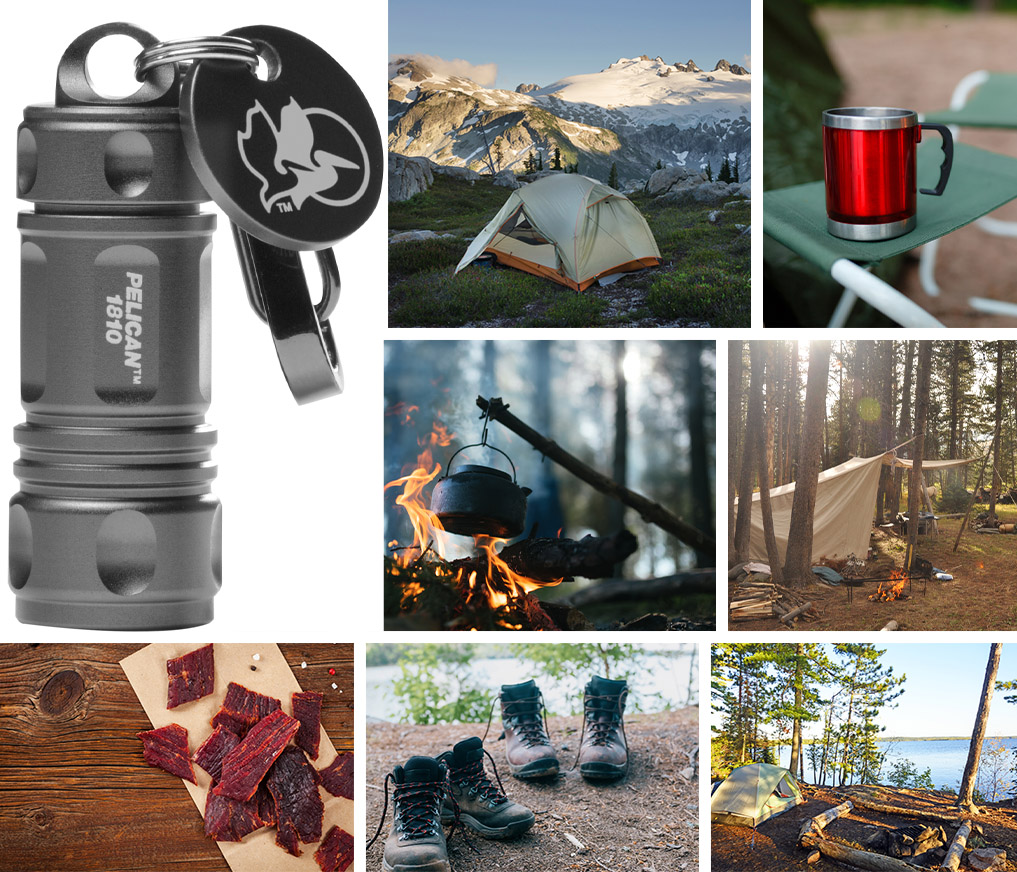The Ultimate Guide to Backcountry Camping
February 22, 2021

Whether it’s for a quick day hike, overnight camping trip or a week-long hunting excursion, setting out into the backcountry wilderness is a wonderful experience. It removes us from the everyday hustle and bustle of our modern lives and allows us to get in better touch with nature. Taking in the fresh scent of evergreen pines or taking off your boots and dipping your toes in a stream can do a lot for one’s spirit. It connects us to the earth and sends us packing home with a renewed sense of wonder and amazement of all its beauty.
However, setting out into the wildness also requires certain skills. It means you have to be self-reliant, knowing how to build a fire and navigate your surroundings, simply in order to survive. If you appreciate the notion of learning these primal skills, then backcountry camping might be for you. One thing’s for sure – as you stare up at the night sky’s stars and listen to the sounds of nature as you drift off to sleep, you’ll be rewarded!
Ready for an adventure in the wilderness? Here’s the ultimate guide to backcountry camping, including tips on what to carry in and how to stay safe from the elements and the environment.
Master the Camping Fundamentals
Before you go backcountry camping out in the wilderness, you need to understand and master some of the basics of camping, period. Unlike a campground where you have neighbors and even a campground host to help out in emergencies or to lend a hand, backcountry camping requires more knowledge of survival skills. So make sure you gain experience and master these skills first before you venture into the wilderness.
- Understand the Leave No Trace principles
- Learn navigation skills using only a map and compass
- Study weather patterns and signs of storms
- Practice packing proper clothes and layers
- Practice building a fire and cooking with it or a camp stove
- Master quickly setting up a tent or makeshift shelter
- Understand how to use a water purification system
- Practice hanging food away from bears
- Brush up on your first aid skills
Practicing these skills can give you the basic foundation of backcountry camping skills. But many skills also come with years of experience. Accompanying a group on your first outing or two can help you learn.
Must-Have Essentials for Backcountry Camping
To master some of the camping basic fundamentals listed above, it helps to have the proper gear, equipment and other essentials. But what to bring camping on a car camping trip looks a lot different than backcountry camping. And while the 10 Essentials for backpacking, which include an LED flashlight or headlamp, is a good place to start, there’s more to it. From cooking to sleeping and navigation, here are the must-have items.

Food, Water and Cooking
Staying nourished and hydrated while backcountry camping is important. When starting out, consider using no-cook camping meals, such as freeze-dried meals or instant soups to make it easy on yourself. And don’t balk! These days, you’ll discover gourmet-like options. You may also want to consider packing foods that don’t require cooking at all like hard cheeses and breads, whole fruits like apples or pears (without wasteful peels) and dehydrated fruits like raisins or apricots, as well as nuts and seeds. All of these are great snacks between meals.
Colder temperatures bring a bit more of a challenge, as you’ll crave warm meals and drinks. Think cocoa, tea and coffee for colder backcountry camping. And stick with the instant meal packs and soups to conserve energy and fuel. A warm cup of oatmeal is a nice way to start a chilly day.
Another tip when starting out is to pack a small one-burner stove. There's no guarantee you can get a fire going. Rain might be your enemy. So having a backup plan is always a good option, whether you’re a beginner or experienced backcountry camper. Choose a lightweight stove that operates using pressurized gas, a more convenient and safe alternative to flammable white gas. Keep in mind, though, that cooking in high altitudes can bring their own challenges and might require additional gear or specific fuel.
Unless there’s a burn ban or finding dead and downed wood scarcely available, you can also learn how to build a wood fire and simply cook a meal directly over the flames. However, cooking over a fire takes practice and needs to be attended at all times. It’s also safe to have water nearby, ensuring the fire is completely out before hitting the sack or vacating your site.
Shelter, Pads and Sleeping Bags
Carrying everything in on your back, backcountry camping needs only the very basics of sleeping arrangements. While this can be as simple as a tarp draped over a guyline strung from two trees, a step up would be a single-person tent or bivvy. As opposed to roughing it on the ground with just a sleeping bag, pad and rainfly, tents offer more shelter from the elements, keep out insects and are much warmer. Another lightweight alternative is hammock camping, which comes with many of the same benefits. You can even find a mesh liner and rainfly as protection.
Before your first trip, practice setting up your tent or hammock. It’s not just for practice. It’s to ensure all parts are there and nothing is missing. If you choose to set up a tarp, make sure to add a few loops for hanging carabiners to hang gear and learn basic knots to keep it secure.
While probably the bulkiest part of your gear, sleeping bags are essential and keep you warm when the temperatures drop at night. When backcountry camping, choose a bag made of synthetic materials. Cotton will absorb moisture and, once wet, becomes heavy and less insulative. Hammock camping might require an underquilt, depending on the season. Last but not least, a lightweight sleeping pad – either closed-cell foam pad or self-inflating – can offer additional support and insulation.
Navigation, Maps and Orienteering
Aside from your nourishment and shelter, you’ll need to know where you’re headed, of course! While a GPS or cell phone is convenient, things can go wrong real fast. The cell service can drop or you can even drop the phone itself. Needless to say, this is not a reliable means of navigation. Instead, practice orienteering, reading maps and fine-tuning those compass skills.

Staying Safe While Backcountry Camping
Whether you’re solo camping or headed out with friends, it’s wise to play it safe. Learning the environment and following the Seven Leave No Trace principles are just plain good backcountry safety. But so is simply knowing basic first aid. So stay safe on your journey with these tips.
Know Your Environment (and Its Dangers)
Learn the environment! Every region and terrain can bring unique challenges and hazards. From backcountry camping in bear territory to flash floods and avalanches, know what you’re up against and don’t go in blindly! It can protect you and other party members.
For instance, canyon country regions can see extreme temperature drops at night and are home to snakes. So, it’s nice to know these things. That way, you can pack appropriate layers and be more mindful of where you step or take a potty break. In high-altitude, mountainous regions, you need to be aware of signs of avalanches and how to prevent altitude sickness.
The creatures you encounter are also a challenge to be mindful of. Bear country requires you use a bear canister, hanging food (and even sunscreen or any highly aromatic items) out of reach and cooking food away from the site. It’s also wise to learn how to use bear spray in emergencies.
Brush up on the environment, terrain and creatures you might encounter. Learn how to navigate the area (using only a map and compass). It also helps to learn how to handle a run-in with the area’s native wildlife. Your first instinct might tell you to run, when slowly backing away with your hand on a canister of bear spray might save your life.

Follow Leave No Trace Principles
Even on a hike in a local park, it’s important to follow the Seven Leave No Trace principles. But as a reminder, here are the main principles to practice when backcountry camping. They may not be used often when car camping, but you will use them much more frequently in this case. And when backcountry camping, leaving a minimal footprint can have a profound impact on the environment.
Carry Out – Be sure to carry out everything! Not just trash, but even food particles, peels and cores that attract critters and insects. You want to leave the areas clean (if not cleaner) than when you first arrived.
Clean Away from Water – Once you finish eating, clean pots and utensils away from any water source. Instead of cleaning at the shore or stream, which might seem convenient, carry water 100 yards away to do your scrubbing. This principle goes for showering, too, keeping soap, bug spray or sunscreen from directly entering the water.
Bury Human Waste – When backcountry camping, carry a plastic trowel to help you dig a cathole to bury your waste. Dig the hole at least eight inches deep, if you can. In harder soils, like dry deserts, find out what the protocol is for discarding human waste.
Build a No-Impact Fire – When building a fire backcountry camping, try to use an established fire ring or build a no-impact fire. Also, only build the fire with downed, dead wood and keep the flames from getting out of hand. Put it out with water at night and when you pack it in, make sure your makeshift fire pit is completely unnoticeable.
Learn Basic First Aid
Prevention is key to staying safe while backcountry camping. Still, in the event of an accident or emergency, you need to know what to do. Accidents do happen and can be as commonplace as cutting a finger while preparing food or taking a tumble and breaking a bone. So knowing how to calmly handle the situation and get help is an imperative survival skill.
For starters, take a Wilderness First Aid class. A wilderness first aid class can train you on injury prevention and train you how to handle cuts, sprains, broken bones and more – all out in nature. You will be guided on basic first aid as well as how to stave off hypothermia and stay warm in dire situations and how to build a litter to carry someone. It’s also a good idea to always start off backcountry camping with someone or a group who is more experienced. Through group camping, you can pick up and learn a lot of new tricks, accumulated over years of backcountry experiences and travels. It can be as simple as how to cross a stream safely or how to build a weather-proof shelter to stay warm (even in snow!).

Set Out on Your First Backcountry Camping Trip
Head out into the backcountry without intimidation! With much to learn, experiences are the best way to do so. While there is plenty of basic knowledge, and even some safety to be aware of, setting out on your first backcountry camping trip doesn’t have to be scary. Taking baby steps, practice somewhere closer to home as you become accustomed to your gear and setting up shelters and building fires. Once you feel comfortable, push yourself to try a new environment entirely!
Backcountry camping in groups also makes the experience more enjoyable for some. In the wilderness, the nights can get pretty quiet, but knowing you’re surrounded by others can keep you calm and collected. After all, you want it to be enjoyable and a way to connect with nature without being worried about it.
One last tip: If you plan to go backcountry camping for a hunting trip, make sure to carry a gun case to protect your equipment. The elements can be disastrous for rifles and more, so take care of your investment.

SIGN UP FOR EXCLUSIVE OFFERS
Sign up for our newsletter and get exclusive access to new product launches, special offers and much more.
RELATED BLOGS















